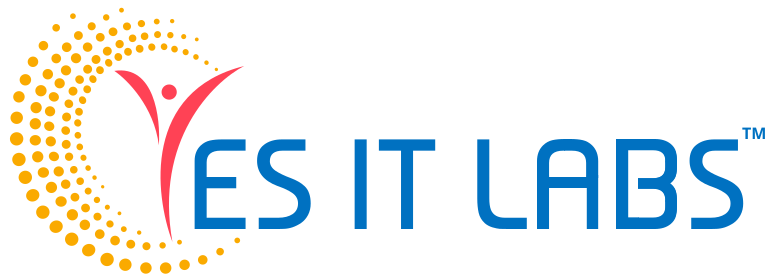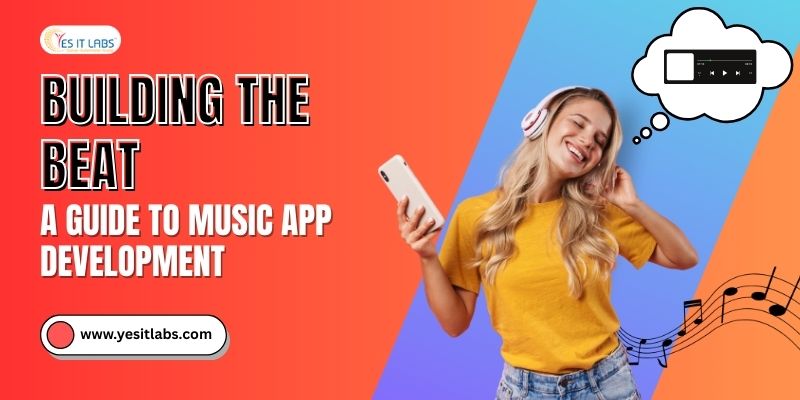Music App Development has become a transformative force in today’s digital landscape, where the fusion of mobile technology and music opens up endless possibilities for innovation and creativity. As mobile devices continue to dominate how we consume and interact with content, music apps are leading the charge—offering users personalized, on-demand audio experiences that go far beyond traditional listening. From discovering new artists to creating beats, collaborating with others, or simply enjoying seamless streaming, music apps are reshaping the way we engage with sound.
This comprehensive guide is tailored for a diverse audience: passionate musicians eager to share their craft, aspiring developers exploring the technical aspects of app creation, and entrepreneurs seeking to break into the fast-growing digital music industry.
Understanding the Music App Ecosystem
What Are Music Apps and Why They Matter
Music apps have reshaped how we engage with sound. They range from streaming services and digital instruments to social platforms that offer a space for budding artists and creative communities. These applications provide immersive experiences by merging robust technology with the art of music creation and curation.
Through extensive market research, it’s clear that today’s consumers not only expect high-quality sound but also seamless interactions, intuitive design, and personalized experiences. This transformation is powered by advancements in AI, cloud computing, and mobile technology, making it an exciting time for developers and musicians alike.
A Look at Current Trends
Streaming and Personalization: With the rise of personalized playlists and AI-generated recommendations, consumers demand music apps that not only play songs but understand their moods and tastes.
- Social Integration: Platforms that enable collaboration and community interaction are gaining traction, as users seek spaces to share playlists, attend virtual concerts, or collaborate on original tracks.
- Cross-Platform Innovation: Leading-edge apps often integrate functionalities across devices and operating systems, ensuring that whether you’re using an Android or Apple device, your music experience remains consistent.
This section sets the stage by providing a clear picture of where the industry stands today and why innovative app design matters. In understanding the competitive landscape, every decision—from feature selection to UI/UX design—must be informed by current market trends and user behaviors.
Setting the Vision: Strategy and Planning for Your Music App Development
1) Defining Your Audience and Objectives
Successful music platforms begin with a clear vision. Identify the needs of your target audience:
- Who: Are you catering to professional musicians, casual listeners, or creative communities?
- What: What unique value are you providing? Whether it’s a cutting-edge streaming experience or a collaborative platform for artists, your purpose will define your app’s core functionality.
Establish your primary objectives early on. A focused vision aligned with well-researched market demands builds a strong foundation for future success.
2) Market Research and Analysis
Diving deep into competitor analysis is essential. Study popular platforms—examine their strengths, weaknesses, and user feedback:
- Competitive Analysis: Learn from giants in the industry by understanding what makes apps like Spotify, SoundCloud, or emerging indie platforms successful.
- User Insights: Delve into consumer reviews, forums, and surveys. What do users love, and where are they underserved.
- Case Studies: Analyze real-world examples to uncover the common pitfalls and innovative breakthroughs in the industry
In doing so, you create a data-driven roadmap that not only informs your feature set but also positions you ahead of the curve.
3) Planning the Feature Set
Organize your feature planning into “must-haves” versus “nice-to-haves.” Consider including:
Core Streaming and Playback Capabilities: Seamless integration of audio streaming with an emphasis on high-fidelity sound.
- AI-Driven Personalization: Recommendation engines to tailor playlists based on user preferences.
- User Community Features: Options for playlist sharing, collaborative projects, and interactive social elements.
- Robust Search Functions and Metadata Management: Ensure users can quickly find songs, artists, and genres with ease.
To further enhance reach and platform reliability, consider partnering with a reputable android apps development service when targeting the Android market. This ensures that the technical aspects of your app are robust and future-proof.

Designing the User Experience: Crafting an Engaging Interface
1) User-Centered Design Principles
An app’s success is directly correlated to its user experience (UX) and user interface (UI). Your design should be:
- Intuitive and Accessible: Users should be able to navigate the app effortlessly, regardless of their technical skills.
- Aesthetically Pleasing: A clean design paired with engaging visuals not only attracts users but also enhances usability.
- Responsive Across Devices: Design with adaptability in mind, ensuring consistency whether the user is on a smartphone, tablet, or desktop.
2) Tools and Methodologies
Utilize design tools like Figma, Adobe XD, or Sketch to create detailed wireframes and prototypes. User testing sessions and iterative design reviews are crucial to refine interactions and layouts before moving into development.
The Technical Backbone: Development and Integration
1) Choosing the Right Technology Stack
When planning the architecture of your music platform, the choice between native and cross-platform development is critical. Depending on your audience and budget considerations, you might choose:
- Cross-Platform Solutions: Frameworks such as Flutter or React Native can expedite development by allowing code reuse across both Android and iOS.
- Native Approaches: For the best performance and integration, consider IOS App Development for Apple devices, ensuring seamless compatibility with system-level features.
Your backend infrastructure should focus on scalability and reliability. Cloud services like AWS, Google Cloud, or Firebase can power your app’s data storage, authentication systems, and content delivery networks.
2) Backend and Frontend Development
- Backend Development: Ensure secure user authentication, efficient data storage, and robust content management. Building a scalable backend is essential to support the simultaneous streaming needs of thousands of users.
- Frontend Development: Develop a clean, interactive interface with rapid response times. Consider modern web technologies that allow for fluid animations and a dynamic user experience without compromising performance.
Integrating Music Streaming APIs The heart of any music platform lies in its streaming capabilities. Integrate APIs from established providers to access vast music libraries, metadata, and streaming protocols. Leveraging these APIs not only enhances the functionality of your app but also complies with legal standards related to music licensing.
Launching and Beyond: Testing, Marketing, and Growth Strategies
1) Comprehensive Testing and Quality Assurance
Before a full-scale launch, rigorous testing is non-negotiable:
- QA Across Devices: Test your app on a wide array of devices and operating systems to ensure compatibility.
- Beta Testing: Launch a beta version to collect real-time user feedback, which helps in identifying issues that may not surface in controlled environments.
- Automated Testing Tools: Use services like BrowserStack, Appium, or Firebase Test Lab to automate regression tests and monitor performance metrics.
2) Marketing and Launch Tactics
A successful launch requires a multi-faceted strategy:
- App Store Optimization (ASO): Enhance your app’s title, keywords, and descriptions to boost visibility.
- Targeted Marketing Campaigns: Utilize social media platforms, influencer partnerships, and press releases to create buzz and anticipation around your launch.
- Strategic Pricing Models: Experiment with freemium models, subscriptions, and in-app purchase options to generate revenue while maintaining user engagement.
For businesses aiming to expand reach, consider implementing app development for companies strategies to scale up and enhance cross-platform functionality with professional support.
3) Post-Launch Engagement and Iterative Improvements
The journey doesn’t end at launch. Continuous monitoring of performance, user behavior, and market trends is vital:
- User Analytics: Collect and analyze data to inform periodic updates and feature enhancements.
- Feedback Loops: Engage with your community through surveys, social media, and in-app feedback tools to stay informed about user experiences.
- Iterative Development: Regularly update your app to fix bugs, improve performance, and add new features that meet evolving customer needs.
Legal, Ethical, and Future Considerations
1) Navigating Legalities in Music Licensing and Data Privacy
When building a music app, adhere strictly to legal standards:
- Music Licensing: Ensure that all integrated music content is legally sourced and that licensing agreements are in place. This not only protects your app from legal ramifications but also builds trust with users and rights holders.
- Data Privacy: Implement robust security measures and comply with global standards like the GDPR and CCPA to safeguard user data.
- Terms of Service: Clearly communicate user rights, responsibilities, and disclaimers to foster a transparent relationship with your audience.
2) The Future of Music Technology
The music industry continues to evolve with groundbreaking technologies:
- AI and Machine Learning: Enhance personalized recommendations and content curation.
- Blockchain: Explore secure, decentralized models for royalty distribution and copyright management.
- Augmented Reality (AR) and Virtual Reality (VR): Transform the concert experience and interactive learning for musicians.
Future-proofing your platform by staying ahead of these technological trends can set your app apart in an increasingly competitive market.
Conclusion
Building a successful music platform requires a harmonious blend of creative design, technical expertise, and strategic marketing. This guide has walked you through every step—from conceptualization and market research to design, development, testing, and growth strategies—with a commitment to quality, credibility, and actionable insights. With careful planning and a focus on user experience, your innovative ideas can truly revolutionize the way people interact with music.
Whether you’re coding from scratch or collaborating with a professional partner, the roadmap to success lies in understanding your audience, leveraging proven technologies, and continuously evolving with market trends. Now is the time to seize the digital stage and create an app that not only entertains but transforms the music experience.








